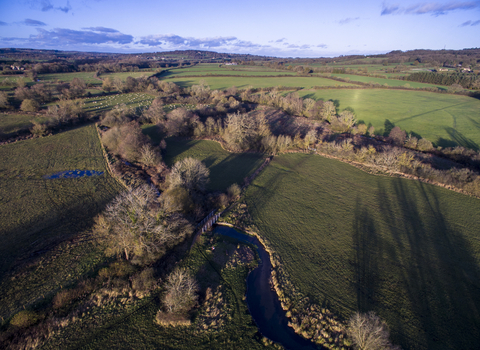What is a Nature Recovery Network?
A Nature Recovery Network is a joined-up system of places important for wild plants and animals, on land and at sea.
It allows plants, animals, seeds, nutrients and water to move from place to place and enables the natural world to adapt to change. It provides plants and animals with places to live, feed and breed.
It can only do this effectively if, like our road network, it is treated as a joined-up whole.
The Wildlife Trust has been active in developing a Nature Recovery Network (NRN) for Gloucestershire, another key element of the 25 Year Plan for the Environment. These NRN maps will define the local priorities for the new Environmental Land Management Scheme (ELMS). We can help you interpret the maps and advise you on land management to meet these priorities.
The mapping helps landscape scale projects by indicating where gains can be made in reconnecting fractured habitats and where to improve their quality and permeability for species to move through the landscape. Through this mapping we can help neighbouring landowners, working together to achieve joined up landscape scale outcomes and improvements.
Making space for nature to meet the needs of wildlife and people
Protected wildlife sites alone cannot meet the needs of wildlife as evidenced by the continual decline in our native species over the last century. Effective nature conservation requires protection for the many other places in the landscape that are still rich in wildlife despite the many pressures they face.
We can map your estates into the developing Nature Recovery Network for Gloucestershire, another key element of the 25 Year Plan for the Environment. This will help define the estates role in the wider landscape and provide data, maps and advice that will support future management decisions.
Nature recovery mapping will indicate where gains can be made in reconnecting fractured habitats by improving their quality and permeability for species in the surrounding landscape. This information will support the preparation of estate plans by indicating where habitat restoration and the implementation of habitat corridors and ‘stepping stones’ will be most effective for achieving joined up landscape scale outcomes.
Additional map layers will be combined with the NRN maps to indicate opportunities for multiple outcomes for ‘natural capital’ such as air and water quality. The intention is that the estate plan and the NRN maps will be ‘live’ so that as more data becomes available, they can easily be updated and improved.

